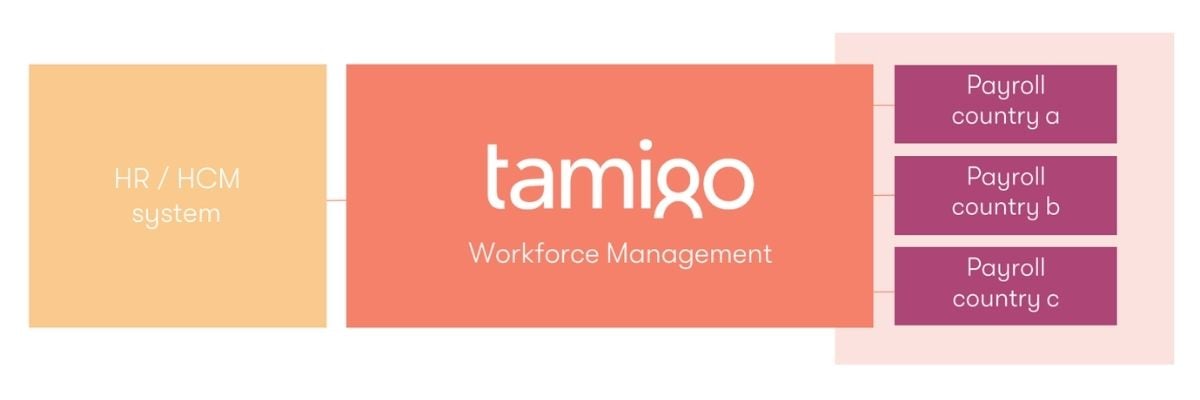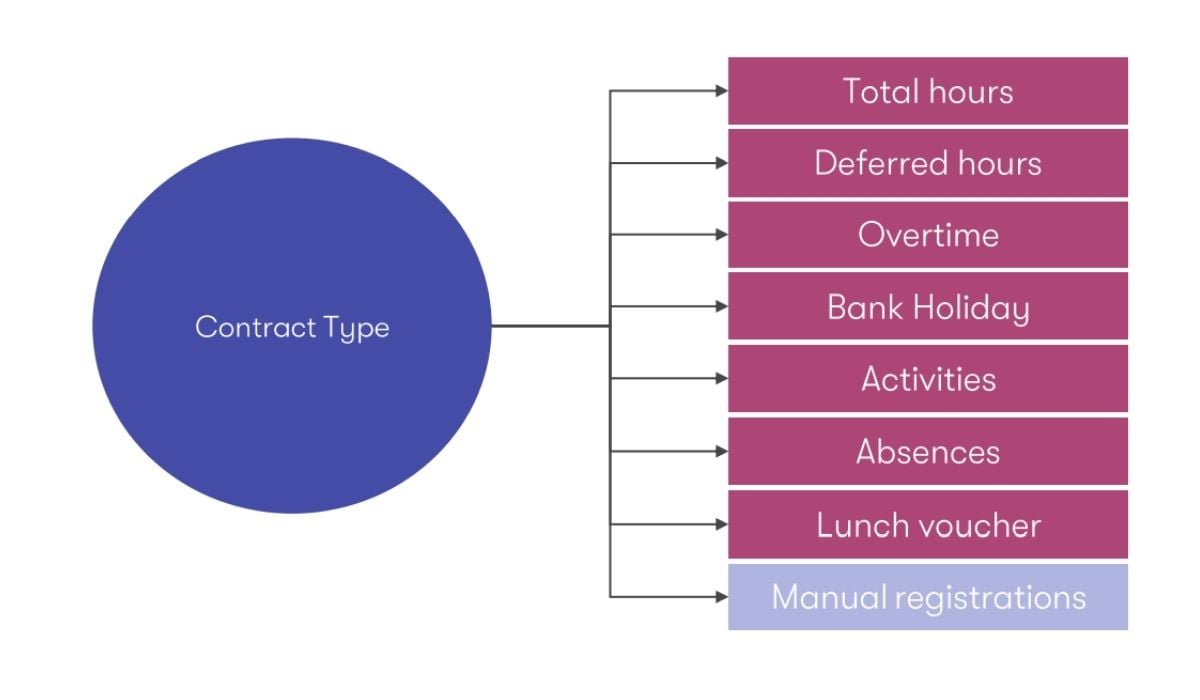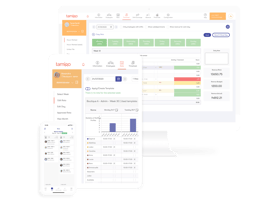A few years back, a UK supermarket chain underpaid their workforce to the sum of nearly £10 million. A payroll error was to blame.
Retail payroll professionals are hugely talented folks: dedicated and eagle-eyed. But considering how difficult their work is, it’s no wonder that mistakes happen.
Fortunately, your retail business can take steps to mitigate risks. In this article, we’ll look at the payroll process – what are its challenges and how can you address them?
Retail payroll: it's complicated
In enterprise retail chains like supermarkets, payroll is handled by a payroll team, sitting in HR or Finance. Their job is — to put it lightly — complex.
Retail workforces are some of the most diverse around with regards to contract types. There's salaried and hourly workers, seasonal staff, students. They’re all compensated differently. Not just for regular hours, but also overtime, lunch, bank holidays... the list goes on.
And then there’s the question of compliance. Every country (especially those in Europe) have strict tax regulations and collective agreements to adhere to.
It’s quite a jigsaw puzzle for the payroll team to solve every week. And the more countries in which your chain operates, the longer preparing payroll takes.
Further reading: How ALDI Denmark save their store managers 30 minutes of admin a day.
Payroll process mistakes and outcomes
The consequences of payroll slip-ups can be stark.
- An increase in staff turnover. There are few things worse than scanning your payslip to find a glaring error. In the US, 49% of employees said they would consider looking for a new job if two mistakes were made with their wages. In the retail industry, where staff turnover is higher than average, any contributing factor is one factor too many.
- Your reputation takes a hit. In 2017, the UK government named and shamed hundreds of businesses that had failed to pay staff the minimum wage. Among them was department store Debenhams, who blamed a “technical error with payroll”.
- You can face fines and legal action. Missed deadlines and miscalculations don’t just hit staff’s take home pay. They have a knock-on effect on the deductions and taxes that are drawn from those salaries—and ultimately, if mistakes aren’t caught, on year-end accounts. For their payroll error, Debenhams was fined £63,000 (or approximately €75,200).

What payroll software handles (and what it doesn’t)
Your retail business has a payroll solution. Doesn’t this protect against payroll mistakes?
Only to some extent. That’s because payroll happens in three distinct stages:
- Payroll Preparation. Collecting and validating data on employees’ worked hours and absences. Making sure starters and leavers have been accounted for.
- Running payroll. The actual calculation of employees’ net pay, minus tax and other deductions.
- Post-payroll processes. Paying out wages and generating pay slips. Record keeping. Reporting to the tax authorities. Dealing with queries from staff about their payslips.
Payroll software takes on a lot of the heavy lifting in stages 2 and 3. But that still leaves the first stage.
Mistakes made here impact everything further down the line. Payroll software can’t generate correct payslips if it’s been fed incorrect hours.
Common challenges
So what exactly can go awry during this information gathering stage? Let’s take a look at 3 big issues enterprise payroll pros face.
It’s time-consuming
Manual processes slow payroll down.
Alongside your payroll system, your company probably also uses an HR or HCM software. This contains all your core HR data, like employees’ start and leave dates, addresses, bank details, etc.
It’s information that’s vital for accurate payroll. But given it’s siloed away in a separate system, payroll first need to extract it. And if the payroll team sits in Finance, they’ll need to request these exports from HR.
Then there’s the timesheets they receive from store or department managers. These could be in the form of spreadsheets, Word docs or scans of pieces of paper.
It all adds up to a mass of disconnected, erratically formatted information that has to be manually synchronised.
Issues around security
Before joining tamigo, our customer support specialist Stefan Klottig worked in HR and payroll for over a decade. Privacy was a paramount concern.
“You had to make sure this type of data was not accessible to everyone. What our employees earned was sensitive information.”
And it wasn’t like this data was confined to one location.
Everyone handling this info might be in a different place. The team lead was on-site, another HR person was working from home and I was in the office.
With remote working now the norm, the secure transfer of information across departments is an even more pressing issue.
The EU takes leaks of private data very seriously. Fines for breaching GDPR regulations can total up to 4% of your company’s annual revenue (or €20 million, whichever is higher).
A lack of accurate data
Let’s say your retail business has 40 stores nationwide. The store managers are responsible for scheduling staff and then recording hours worked. They need to keep these records updated with all the shift swaps, absences and overtime that occurs.
Mistakes can easily happen. One missing timesheet, or one errant decimal point in an Excel is all it takes.
Once this data comes your payroll team’s way, it’s up to them to catch the error. If they do, then they have to call the manager, who in turn has to get hold of the employee, to figure out what went wrong. And that’s just for one out of those 40 stores!
Optimising your payroll preparation
Here's 3 tips for fitting that jigsaw puzzle together perfectly, every pay period.
1. Let the data flow
The information your payroll team needs should always be at their fingertips. Workforce management (WFM) software like tamigo can help. Our platform encompasses a range of tools to help optimise day-to-day operations, including shift planning, absence management and KPI reporting.
tamigo integrates with both your HR and retail payroll software (you can see all our integrations here). This means there’s a steady flow of data right through enterprise payroll. Contact types, wage codes, new employee start dates – everything’s aligned. And it’s all accessible across departments and across countries.

Your payroll team are freed from the drudgery of manual data entry and converting files. And they can rely on this single source of truth to spot errors much sooner in the payroll process.
2. Tighten up security
HR data in tamigo is handled in accordance with GDPR — in both how we store data, and how it’s made accessible. Administrators of your tamigo account can assign different levels of access. So the payroll team only see information on their colleagues which is relevant to their work.
And as everything is stored in one password-protected system (with the option of SSO staff login too), you eliminate the risks that come with paper. No more confidential information lying around the office or left on the bus. Visit our Trust Centre for more details.
3. Make compliance a default
Whenever you add an employee to tamigo, you assign them a contract type. You can configure these contract types with all the different wage rates you need – how much staff receive for regular hours, but also overtime, lunch, working on a bank holiday, etc. All customised to whatever country they’re working in.

With these rules in place, tamigo’s automations kick into gear, sorting worked hours into these different wage buckets. The final results are added to your payroll export, correct and compliant — ready for your payroll software to take over.
A WFM solution’s benefits don’t just stop with HR and payroll processes. It can drive efficiencies across every department in national and international retail businesses. For a real-world example, have a read of our Bijou Brigitte customer case.
And if you want to learn more about tamigo for retail, check out our dedicated industry page.





